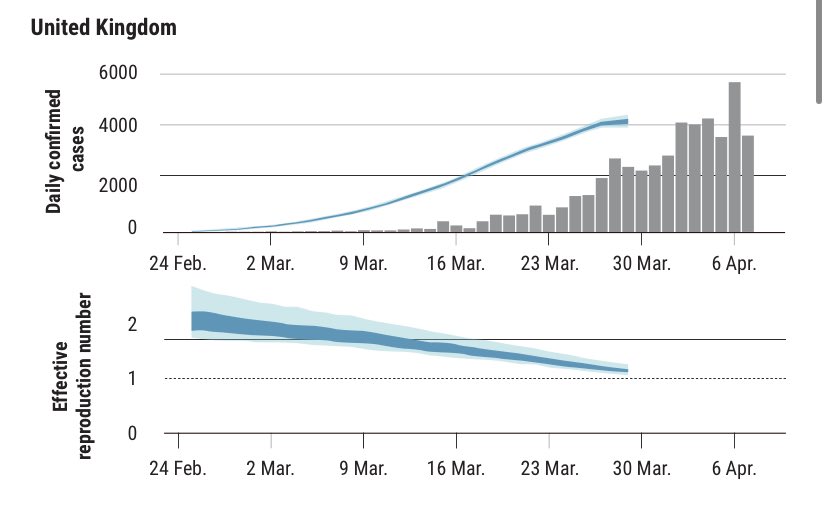When I asked @mlipsitch recently about the future of the #covid19 pandemic, he told me: „We’ve managed to get to the life raft. But I’m really unclear how we will get to the shore.” Here‘s my story and a short thread about the long way to shore https://www.sciencemag.org/news/2020/04/ending-coronavirus-lockdowns-will-be-dangerous-process-trial-and-error">https://www.sciencemag.org/news/2020...
First, where are we at? There are more than 2 million confirmed cases of #covid19 now. This number is increasingly meaningless given difference in testing strategies etc. We know: The virus is still spreading throughout the world. It has killed >120,000 people. It will kill more.
Countries around the globe have responded to #covid19 with unprecedented measures: Gatherings are cancelled, borders closed and businesses shuttered. School closures in 188 countries affect more than 1.5 billion students. These measures are themselves creating huge suffering.
In some places these measures are barely feasible and may not stem the spread of #sarscov2. These places will be hit hard and the men, women and children there will need the world‘s solidarity more than ever before in the coming months.
But other places - first in Asia, now more and more in Europe - have managed to bend the curve. So what happens once case numbers come down to very low levels there? What comes next?
As @gmleunghku told me: „Governments will have to realize that there are basically three control knobs on the dashboard“:
1. Case-based interventions: Test widely, find and isolate cases, trace and quarantine contacts. Apps may play a role here. We‘ll see
1. Case-based interventions: Test widely, find and isolate cases, trace and quarantine contacts. Apps may play a role here. We‘ll see
2. Border closures to keep new introductions of the virus to a minimum.
3. #PhysicalDistancing measures that we have all gotten to know (though not used to) in the last months.
3. #PhysicalDistancing measures that we have all gotten to know (though not used to) in the last months.
There are problems with all of these. The upshot is: It is very unlikely that 1 and 2 alone will be enough, so some of 3 will be needed. The question now is: how much and which measures exactly?
Finding that out will be a process of trial and error to some extent. And it will differ in different places.
„Because we don’t have really strong evidence, it’s quite hard to make evidence-based policy decisions about how to go back“, says Caroline Buckee.
„Because we don’t have really strong evidence, it’s quite hard to make evidence-based policy decisions about how to go back“, says Caroline Buckee.
One thing is clear: Countries will have to move slowly and in a step-wise fashion when relaxing #physicaldistancing. The number many of us will be looking at as this happens is the effective reproduction number Rt.
Remember: R tells us how many people an infected person in turn infects. If R>1 the outbreak grows, if R<1 it shrinks. Countries have bent the curve by pushing R below 1. Once the spread is tamed, countries can try to loosen restrictions while keeping R hovering around 1.
Modelers are estimating R in real-time. That can help manage the next phase of the pandemic, says @AdamJKucharski: „If governments put a measure in or lift it, they can get a sense of what the immediate implications are, rather than having to wait“
Here is the example of Austria which lifted some measures yesterday and the UK which has extended the lockdown.
Many more countries here courtesy of @LSHTM: https://epiforecasts.io/covid/posts/global/">https://epiforecasts.io/covid/pos...
So, short version: countries have to make sure measures 1 and 2 work and see how much they can roll back 3 while keeping Rt around 1. We will find out what that means in practice.
In the long run this will end when enough people are immune either because they have been infected or - preferably - thanks to a vaccine. As @JeremyFarrar says: „Science is the exit strategy.“

 Read on Twitter
Read on Twitter



